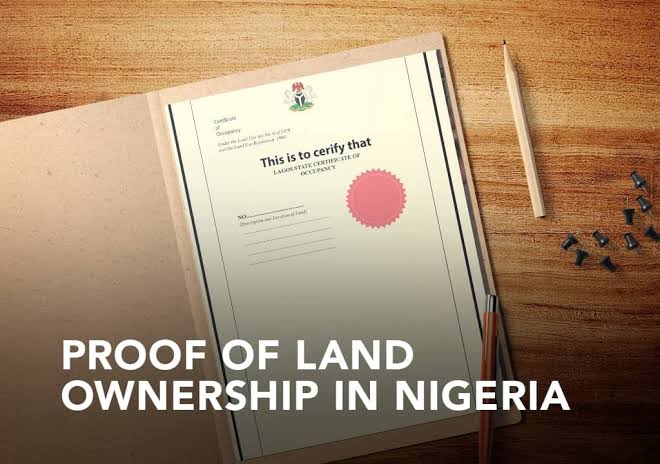What are Five Ways to Prove Ownership of Land
Introduction
In Nigeria, land is a priceless asset. Whether it’s a residential plot, commercial property, farmland, or estate development project, land ownership confers not only economic power but also social status. However, land disputes are among the most common legal issues in Nigeria today. From family feuds and community conflicts to fraudulent sales and multiple allocations, the question of who truly owns a piece of land often ends up in court.
For this reason, being able to prove ownership of land legally is essential. Without valid and recognized proof, your investment can be lost, disputed, or revoked—no matter how much you paid or how long you’ve occupied the land.
In this article, we’ll explore in detail the five major ways to prove ownership of land in Nigeria, with supporting case law, statutory references, and practical tips. Whether you’re buying, selling, inheriting, or regularizing land, this guide is your go-to resource for understanding your rights and protecting your property.
Why Is Proof of Land Ownership Important?
Before diving into the five methods, it’s important to understand why legal proof of land ownership is critical in Nigeria:
To validate your claim during a dispute
To prevent encroachment or trespass
To obtain development or building permits
To apply for a Certificate of Occupancy (C of O)
To sell, lease, or transfer the property legally
To access financial services using land as collateral
Failure to prove ownership can lead to the revocation, repossession, or nullification of your interest in land—no matter how long you’ve possessed it.
The Five Major Ways to Prove Ownership of Land in Nigeria
Under Nigerian law, especially as established in the landmark case of Idundun v. Okumagba (1976) 9–10 SC 227, the Supreme Court laid out five legally recognized methods of proving ownership of land:
Proof by Traditional History of Ownership
Proof by Production of Title Documents
Proof by Acts of Long Possession and Ownership
Proof by Acts of Possession Adjacent to Land in Dispute
Proof by First Settlement or Discovery
Let’s now explore each method in detail.
1. Proof by Traditional History of Ownership
1.1 Meaning
This refers to ownership established through ancestral or customary land rights. It applies where land has been passed down from generation to generation without formal documentation.
1.2 Common in:
Rural communities
Family lands
Communal land ownership systems
1.3 Requirements for Proving Traditional Ownership
Consistent and credible oral evidence
Chain of inheritance or family transfer
Recognition by community heads or traditional rulers
Absence of conflicting ownership claims
1.4 Supporting Case Law:
Idundun v. Okumagba (1976) – The Supreme Court affirmed that traditional history, when unbroken and generally accepted, is valid proof of ownership.
1.5 Practical Tips:
Obtain a Letter of Attestation from the community head or Baale
Record the chain of inheritance clearly
Use witnesses to confirm traditional occupation
Apply to convert traditional ownership to statutory title (e.g., R of O)
2. Proof by Production of Title Documents
2.1 Meaning
The most straightforward and recognized form of land ownership in Nigeria is by producing registered title documents.
2.2 Examples of Title Documents
Certificate of Occupancy (C of O)
Deed of Assignment
Deed of Conveyance
Deed of Gift
Governor’s Consent
Land Purchase Receipt
Survey Plan (Registered)
Excision Gazette
2.3 What Makes a Title Document Valid?
Signed by appropriate authority (e.g., Governor or authorized official)
Registered at the Lands Registry
Must describe the land clearly
Must be duly stamped and witnessed
2.4 Supporting Case Law:
Romrig Nig. Ltd. v. Federal Mortgage Bank of Nigeria (2005) – The court upheld that registered title documents are strong proof of ownership.
2.5 Practical Tips:
Always register your title after any transaction
Verify title documents at the Land Registry or AGIS (FCT)
Demand original and certified true copies
Involve a property lawyer for due diligence
3. Proof by Acts of Long Possession and Ownership
3.1 Meaning
You can prove land ownership through continuous, exclusive, and peaceful possession over a long period, especially where no one else has asserted a better title.
3.2 Indicators of Long Possession
Regular payment of land use charge or ground rent
Fencing or permanent structures on the land
Renting out the property
Farming or economic activity on the land
Security of the land (e.g., hiring guards)
3.3 Duration Required
While there is no fixed number of years, courts often consider over 10–12 years of peaceful and exclusive use as credible.
3.4 Supporting Case Law:
Okafor v. Idigo (1984) – Long, undisturbed possession creates a presumption of ownership unless rebutted.
3.5 Practical Tips:
Keep receipts for land charges and taxes
Take photos of buildings or fences erected
Record tenancies or leases given to third parties
Obtain sworn affidavits from neighbors or witnesses
4. Proof by Acts of Possession Adjacent to Land in Dispute
4.1 Meaning
When two parties dispute land ownership, and one party owns neighboring land, that possession can be extended by presumption to the disputed land.
4.2 Legal Principle:
The law presumes that someone who owns land adjacent or adjoining to the disputed land and has exercised control over it likely owns the land in contention.
4.3 When It Applies:
In boundary disputes
Where land has no existing title document
In support of traditional ownership claims
4.4 Supporting Case Law:
Fasoro v. Beyioku (1988) – The court ruled that ownership of adjoining land plus acts of possession could infer ownership of land in dispute.
4.5 Practical Tips:
Survey your adjoining lands with one plan
Build boundary walls to reinforce possession
Use the same name in adjoining land documents
Combine this proof with long possession history
5. Proof by First Settlement or Discovery
5.1 Meaning
This method is rooted in first occupation. It applies where a person or community was the first to settle or discover an unoccupied land and exercised control over it.
5.2 How to Prove It
Historical evidence of discovery or settlement
Lack of prior ownership claim
Community recognition
Archeological or oral history records
5.3 Mostly Used By:
Indigenous communities
Pioneer settlers in rural or undeveloped areas
Families with historical claims to ancestral land
5.4 Supporting Case Law:
Oyeniran v. Egbetola (1997) – The court held that a plaintiff must show credible evidence that his ancestor was the first settler on the land.
5.5 Practical Tips:
Document oral history with elder testimonies
Support your claim with local chief’s attestation
Use settlement maps or historical records if available
Regularize the land through formal title acquisition
Combining Multiple Proofs for Stronger Claims
In land litigation or documentation processes, courts often favor claimants who present two or more forms of proof. For example:
Title documents + long possession
Traditional history + boundary survey
Deed of gift + registered survey plan
This approach strengthens your claim and reduces vulnerability to counterclaims.
What If You Don’t Have Any of These Proofs?
If you do not have any formal documents or historical claims:
Engage a lawyer to conduct a search at the Land Registry
Apply for regularization or excision from the government
Get your land surveyed and apply for R of O or C of O
Seek affidavits and community confirmations to establish history
Tips for Buyers to Verify Land Ownership Before Purchase
Conduct search at Land Registry or AGIS
Demand original documents (not just photocopies)
Visit the land physically
Interview neighbors, community heads, and past occupants
Use a lawyer and licensed surveyor
Conclusion
Land ownership in Nigeria is a sensitive but powerful matter. Whether you’re a buyer, inheritor, developer, or occupant, knowing how to prove land ownership is essential for protecting your investment.
The five major methods as established in Nigerian law are:
Traditional history
Title documents
Long possession
Ownership of adjacent land
First settlement
By understanding these, securing proper documentation, and consulting legal professionals, you can ensure your land rights are never in doubt
Own Land? Make Sure You Can Prove It—Let’s Help You Do It Right.
In Nigeria, land is one of the most valuable assets you can own—but without legal proof of ownership, your claim can be challenged, disputed, or even revoked.
At Chaman Law Firm, we help individuals, families, developers, and investors verify, document, and defend their land ownership using the five legally recognized methods. Whether you need to register your land, perfect your title, resolve a dispute, or prepare your documents for future resale—we’ll guide you every step of the way.
📞Phone: 08065553671, 08096888818
✉ Email: chamanlawfirm@gmail.com
📍 Address: 115, Obafemi Awolowo Way, Allen Junction, Ikeja, Lagos, Nigeria
🌍Click here to learn more about Chaman Law Firm
🛡️ Your land deserves to be protected with proper legal backing. Don’t wait until there’s a dispute—prove your ownership now.


